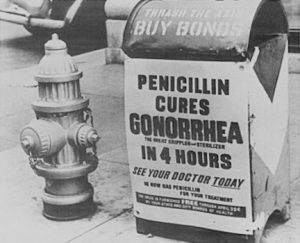In the intricate landscape of modern health, few conditions have as significant and pervasive an impact as diabetes. From its silent onset to its potentially life-altering complications, diabetes has emerged as a formidable health challenge worldwide. With its prevalence soaring in recent decades, understanding this metabolic disorder has become paramount. Regular medical check-ups and comprehensive blood tests serve as indispensable tools in the ongoing battle against diabetes. Annual visits to healthcare providers enable individuals to monitor their blood glucose levels, assess the effectiveness of current treatment plans, and detect any emerging complications at an early stage. These routine evaluations empower patients and healthcare professionals alike to make informed decisions, adjust medications or lifestyle interventions as needed, and strive for optimal diabetes management. Moreover, regular screenings for associated risk factors such as high blood pressure, cholesterol levels, and kidney function can provide invaluable insights into an individual’s overall health status and help mitigate the risk of diabetes-related complications. Therefore, prioritizing regular medical assessments and blood tests is not merely a precautionary measure but a proactive step towards maintaining optimal health and well-being in the face of diabetes.

In blood, hemoglobin A1c (HBA1c) may be considered as a biomarker for the presence and severity of hyperglycemia, implying diabetes or pre-diabetes, or, over time, as a “biomarker for a risk factor,” i.e., hyperglycemia as a risk factor for diabetic retinopathy, nephropathy, and other vascular complications of diabetes 1 The A1c test measures the percentage of red blood cells that have sugar-coated hemoglobin. It is a common test to diagnose pre-diabetes and diabetes.
When should someone get an A1c test done? Get a baseline test if you are an adult over 45 years of age or if you are under 45 years of age and overweight 2 For people without diabetes, the normal range for the hemoglobin A1c level is between 4% and 5.6%. Hemoglobin A1c levels between 5.7% and 6.4% mean you have pre-diabetes and a higher chance of getting diabetes. Levels of 6.5% or higher mean you have diabetes 3 Diabetes affects all different kinds of people, some more than others. To illustrate, volunteers were recruited from 10 diabetes centers in the United States. The study included 104 African American people and 104 Caucasian people with type 1 diabetes for at least two years. During the study, volunteers wore a continuous glucose monitor for 12 weeks. This device measured blood sugar levels every 15 minutes. After 12 weeks, the mean A1c was 9.1% for African American people and 8.3% for Caucasian people. A difference of 0.8%, according to the report 4 With this 0.8% difference, it was found that African American’s have more sugar-coated hemoglobin than Caucasian people.
This imbalance in glycemic control not only reflects the difficulties experienced by minority populations, but it also highlights deeper systemic concerns in healthcare accessibility and quality. Elevated A1C levels in African Americans not only raise the risk of diabetic complications, but also lead to disparities in health outcomes, such as greater rates of cardiovascular disease, renal failure, and lower limb amputations. Addressing the core reasons of this gap necessitates a multimodal strategy that includes increased access to healthcare services, culturally relevant education campaigns, and focused treatments to help people manage their diabetes more successfully. By recognizing and resolving these discrepancies, we can work toward a more equitable healthcare system that assures the best health outcomes for all people, regardless of race or ethnicity 5 Patients and healthcare professionals must communicate effectively in order to comprehend the outcomes of diabetic medical testing. By encouraging an open discourse, patients can get clarity on their test findings, understand their implications for diabetes care, and actively engage in decision-making regarding treatment programs and lifestyle adjustments.
Beyond the biological variables that contribute to higher A1C levels among African Americans, social and environmental factors also have a substantial impact on diabetes outcomes. Minority groups suffer disproportionately from limited access to healthcare services, especially primary care doctors and diabetes specialists, resulting in delayed diagnosis, inadequate management, and increased incidence of diabetes-related comorbidities. Furthermore, societal variables such as financial inequality, food poverty, and a lack of safe physical activity areas in neighborhoods contribute to the diabetes burden among African Americans. ControlAddressing these systemic gaps necessitates a multifaceted strategy that includes regulatory measures to increase access to healthcare, community-based interventions to encourage healthy habits, and activities to address the socioeconomic determinants of health.

By addressing the numerous reasons causing diabetes inequalities, we can move closer to achieving health equity and ensuring that all individuals have the opportunity to live healthy and fulfilling lives, regardless of their race or socioeconomic status 6
In conclusion, the inequalities in diabetes outcomes between African Americans and Caucasians highlight the critical need for targeted interventions that address both biological and socioeconomic determinants. While biological variations may contribute to higher A1C levels in African Americans, it is critical to identify and address systemic inequalities that perpetuate these disparities. Limited access to healthcare, socioeconomic variables, and environmental effects all have a substantial impact on diabetes outcomes. Despite these hurdles, there is hope. Regular medical examinations and detailed blood testing are critical components in the battle against diabetes. Individuals who prioritize yearly visits to healthcare professionals may actively monitor their blood glucose levels, evaluate the efficacy of treatment strategies, and discover any growing issues early on. Furthermore, periodic examinations empower patients and healthcare professionals to make educated decisions, alter treatments as needed, and aim for the best diabetes control. We can work toward a future in which all people, regardless of race or socioeconomic status, have equal access to resources and opportunities for achieving and maintaining optimal health and well-being by addressing the multifaceted factors that contribute to diabetes disparities and prioritizing proactive healthcare measures.

- Timothy J. Lyons and Arpita Basu, “Biomarkers in Diabetes: Hemoglobin A1c, Vascular and Tissue Markers,” Translational Research 159, no. 4 (April 1, 2012): 303–12. ↵
- “All About Your A1C,” Centers for Disease Control and Prevention, August 21, 2018, https://www.cdc.gov/diabetes/managing/managing-blood-sugar/a1c.html. ↵
- “Understanding Diabetes — Diagnosis and Treatment,” WebMD, February 12, 2024. ↵
- Matt McMillen, “Understanding HbA1c: What Is It and Why Is It Important?,” WebMD, November 29, 2023. ↵
- Kirk, John K., Ralph B. D’Agostino Jr, Richard A. Bell, et al. “Disparities in HbA1c levels between African-American and non-Hispanic white adults with diabetes: a meta-analysis.” Diabetes Care 29, no. 9 (2006): 2130-2136. ↵
- Gary-Webb, Tiffany L., and Maria Ines Schmidt. “Diabetes in urban African Americans: assessment of diabetes prevalence, awareness, and management in community churches.” Journal of the National Medical Association 95, no. 7 (2003): 653-660. ↵



1 comment
Lauren Sahadi
I really liked that you talked about a common issue that some people have. I also like how you focused on the differences between diabetes in African Americans and caucasians. Health is a top priority and you did a great job and giving information on addressing biological and socioeconomic factors that influence diabetes. This was a really interesting read, great article.